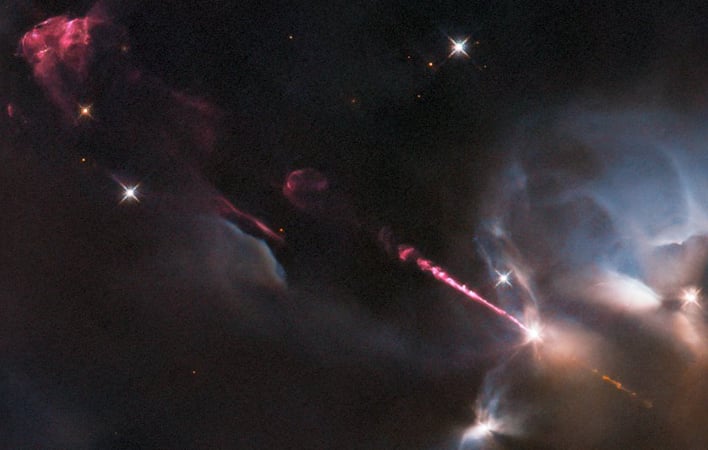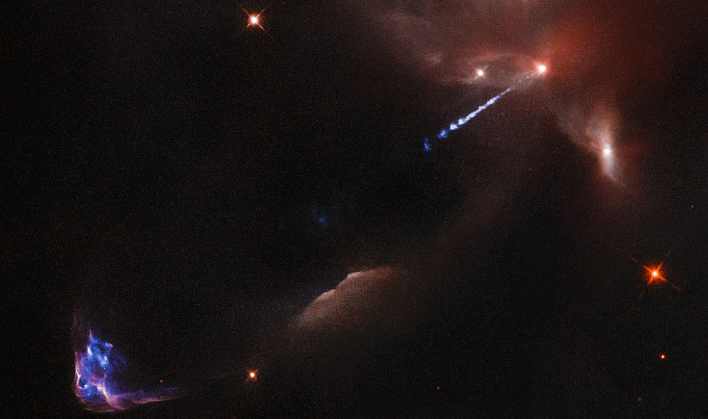Baby Star Throws A Fit And NASA’s Space Telescope Captured This Amazing Laser Jet Shot

As scientist continue to await the James Webb Space Telescope (JWST) to complete its mirror alignment process, they still have plenty of other telescopes at their disposal for taking incredible pictures of deep space. The NASA/ESA Hubble Space Telescope has been providing captivating images since it was launched all the way back in 1990 by the Space Shuttle. One of its most recent images captured a baby star in the earliest phase of formation while throwing a cosmic tantrum.
As material surrounding the still forming star collides with a jet of gas traveling at breakneck speeds, the shock heats the material and causes it to glow. Astronomers refer to the resulting nebulous structures as Herbig-Haro objects, as seen in the upper left of the image at the top of this page.
This particular Herbig-Haro object is known as HH34, and was previously captured by Hubble between 1994 and 2007, and once again in stunning detail in 2015 (as seen in the image below). HH34 is located around 1250 light years from Earth in the Orion Nebulae, which is one of the closest locations of widespread star formation in relation to Earth. This has provided astronomers with insights into how stars and planetary systems are born.

Once JWST completes it mirror alignment process and reaches a temperature cool enough to begin taking images, they will be used along with high-resolution images such as this one taken by Hubble. By comparing images taken by Hubble, astronomers will be able to better interpret future observations made by the Webb telescope. The future of space observation is definitely looking bright.
Top Image Courtesy: ESA/NASA

